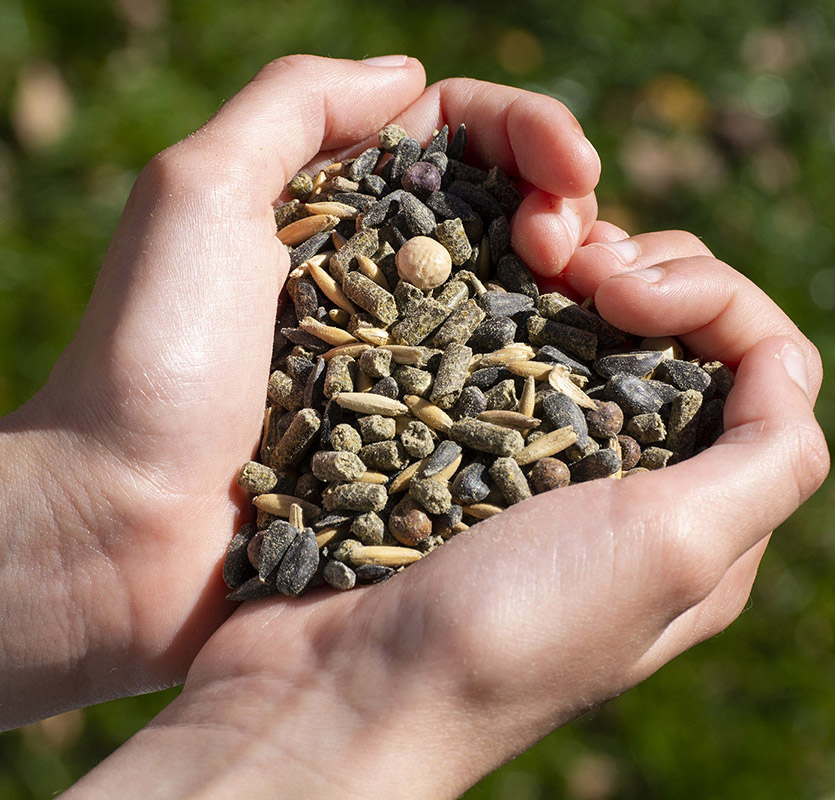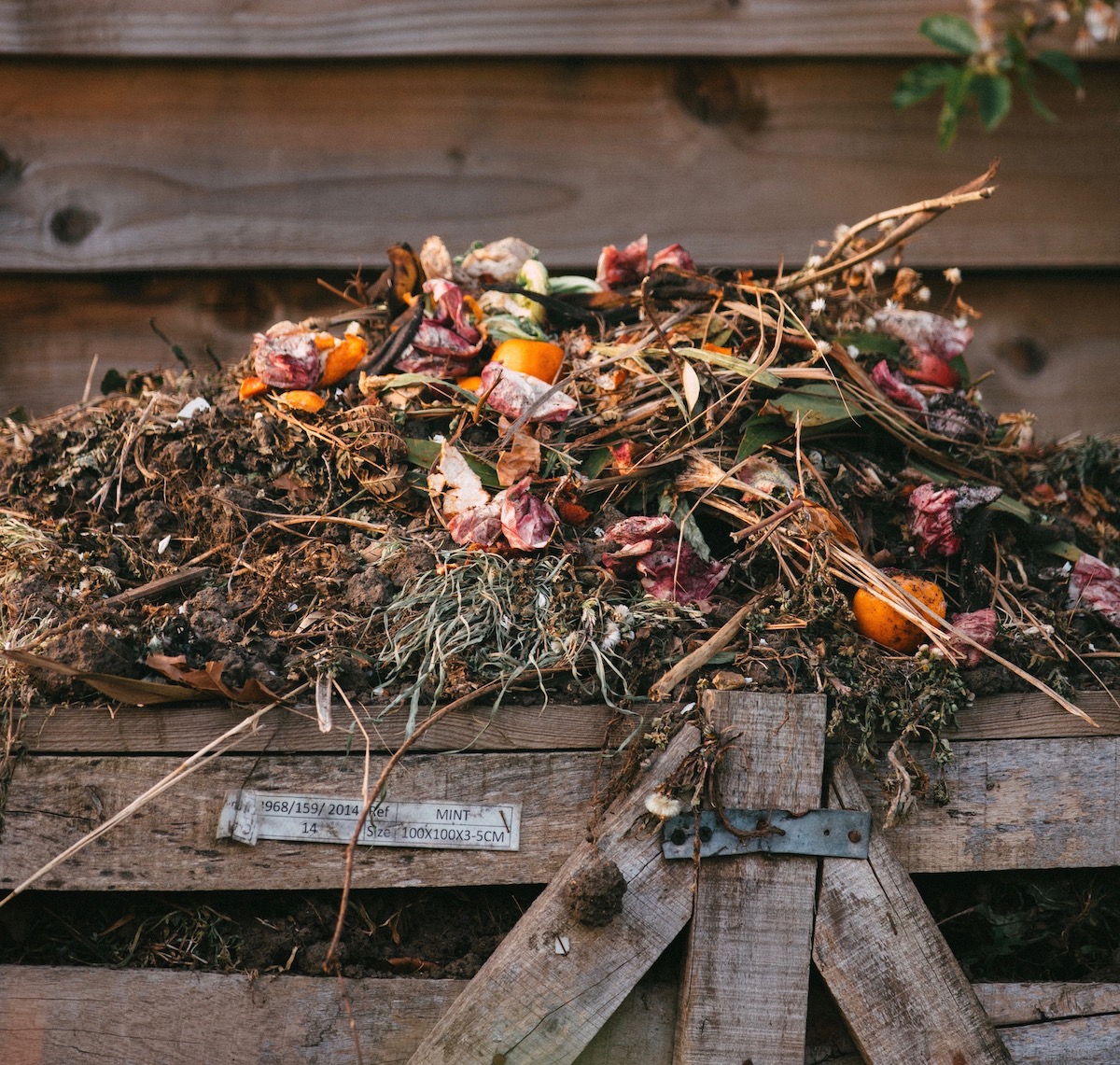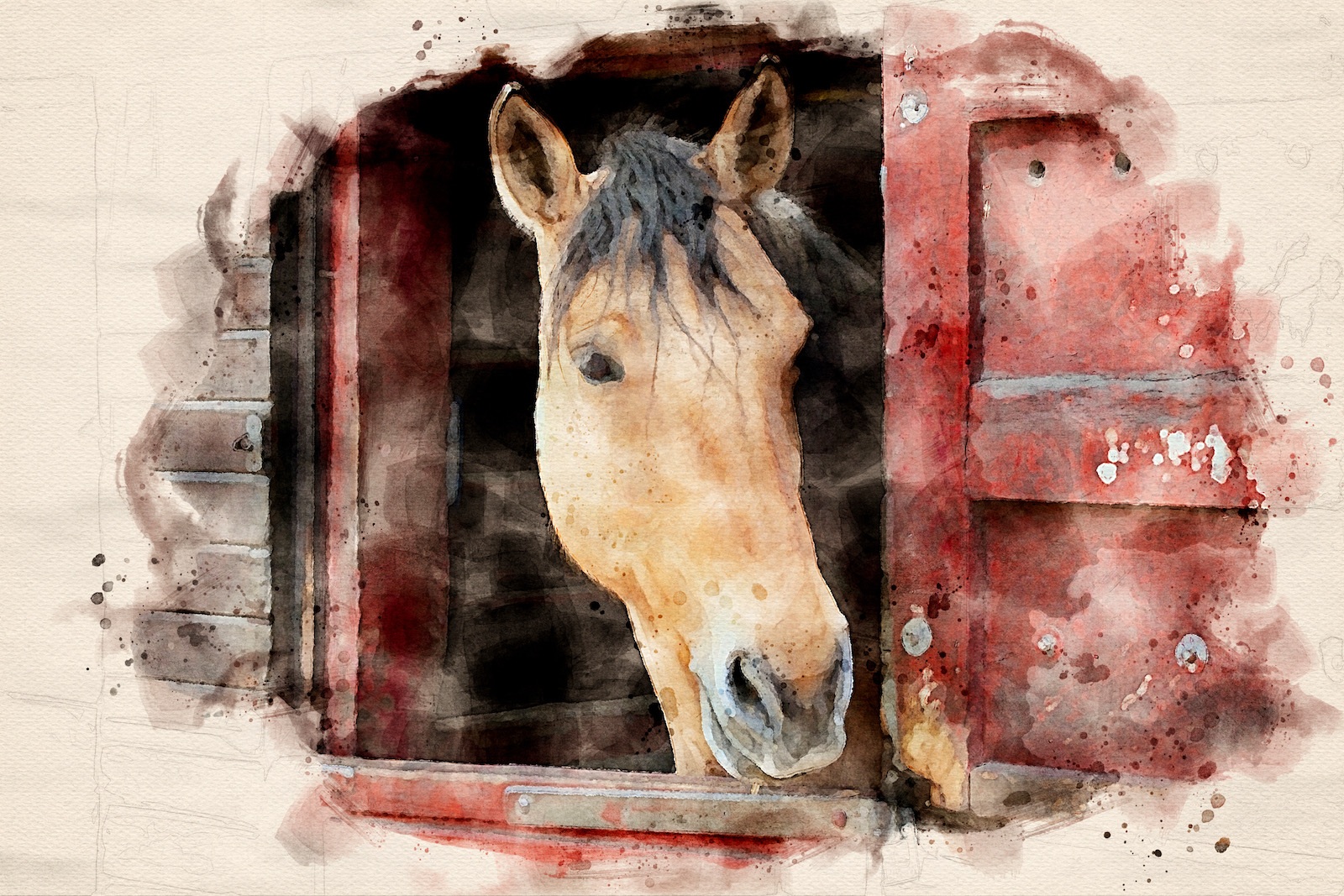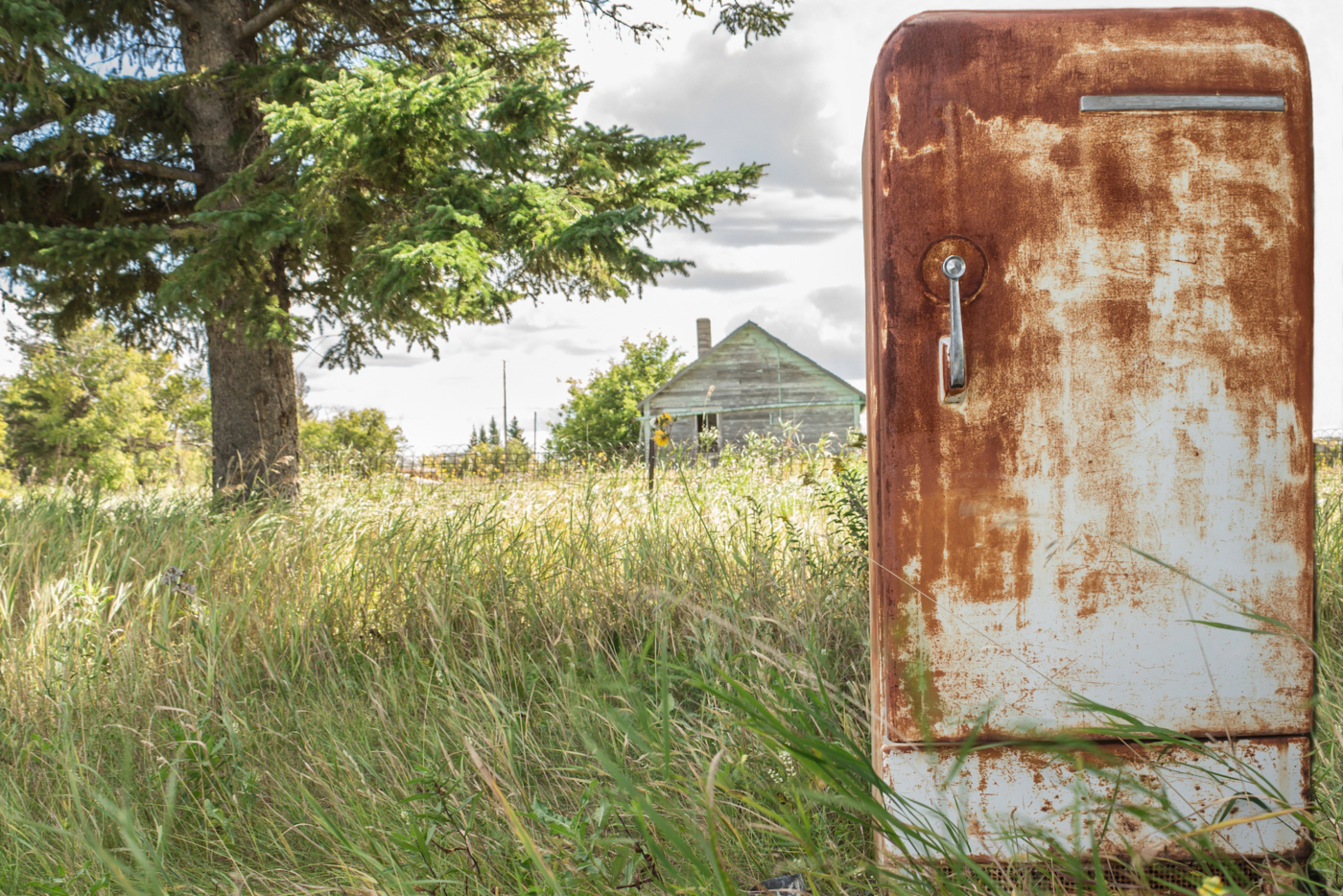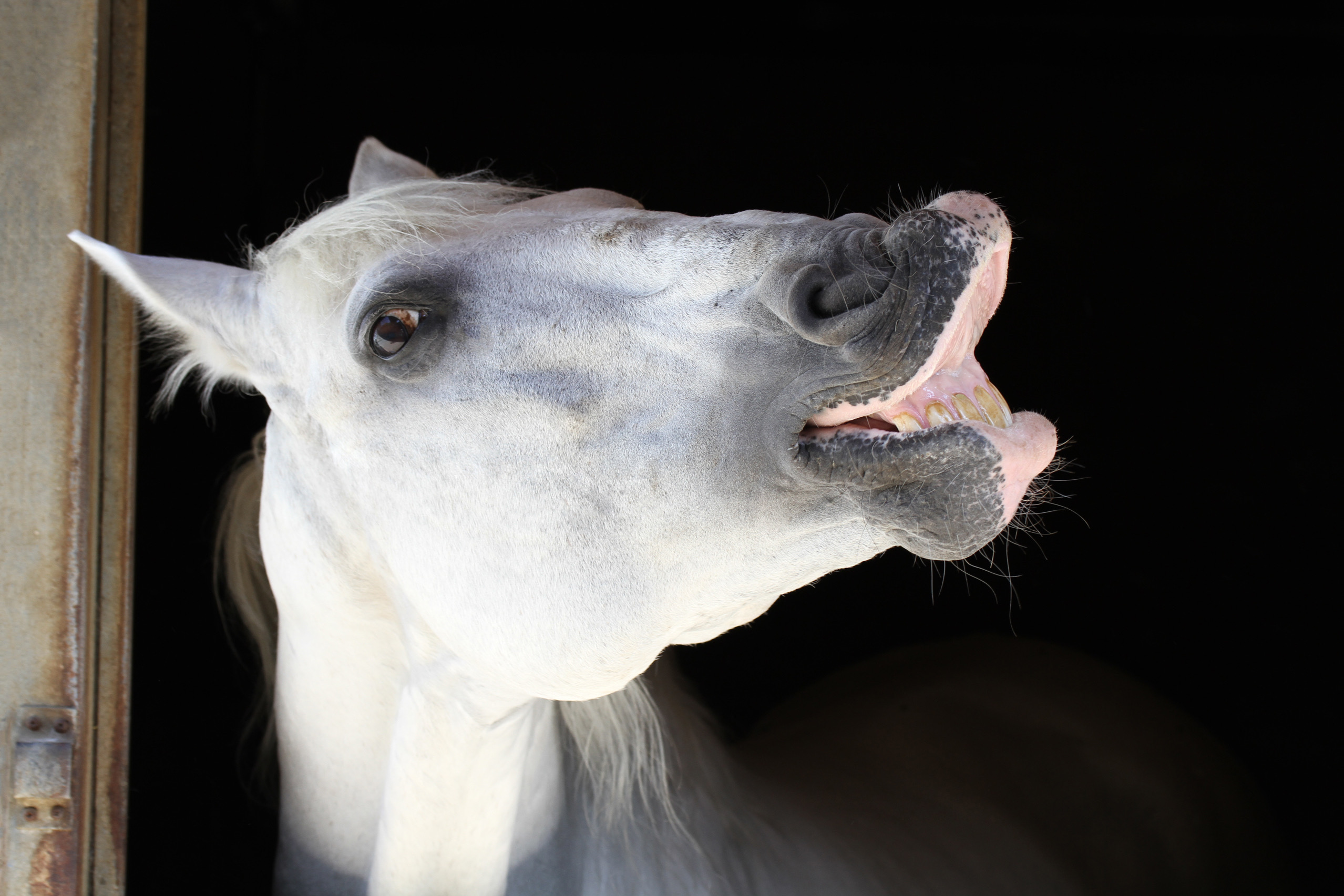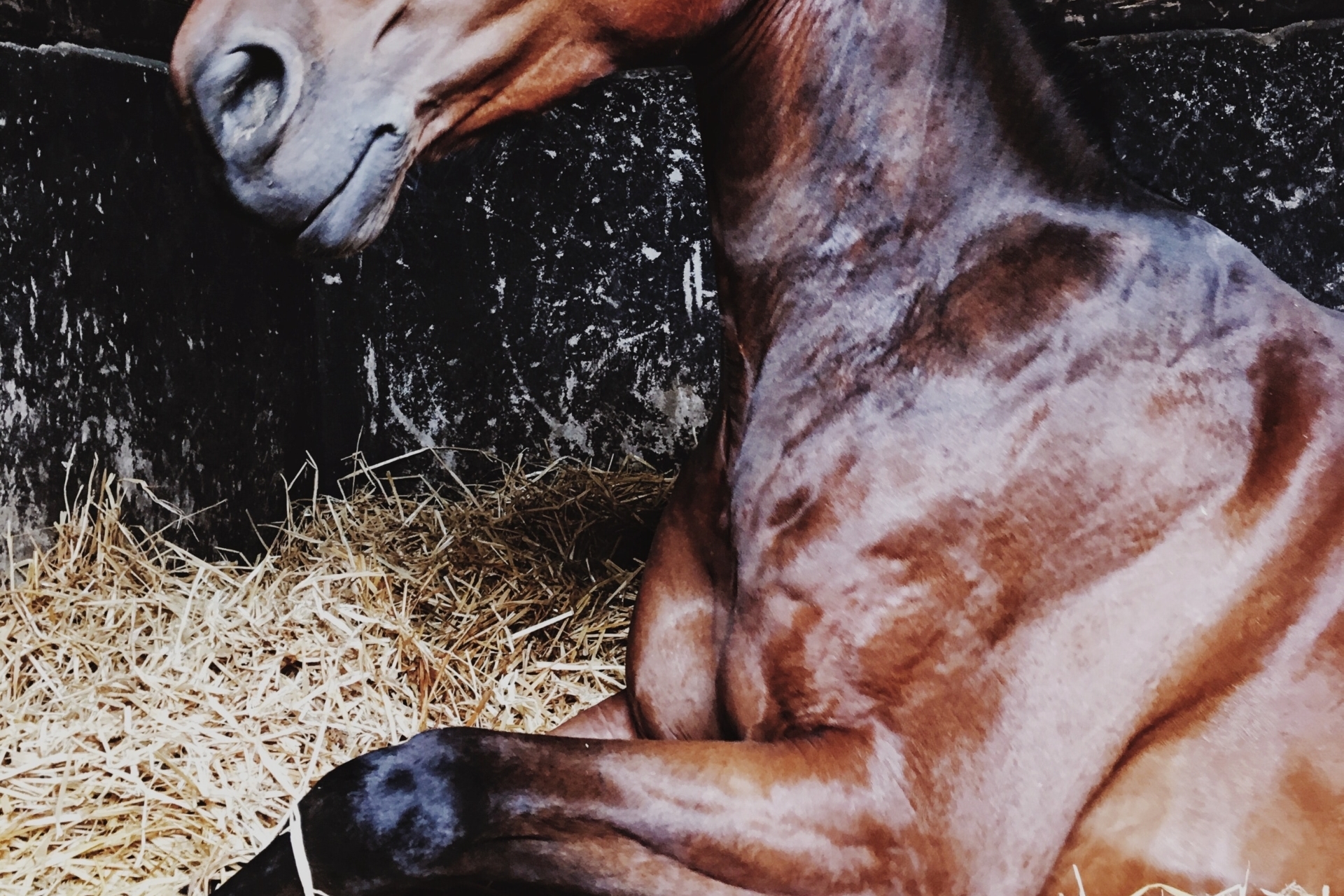Teacher: Class, does anyone know what “all-natural” means?
<Courtney and Elissa raise their hands>
Teacher: Anyone besides Courtney and Elissa?
Teacher: Anyone?
Teacher: Fine. Go ahead…
Courtney: Anyone who knows their way around a grocery store can tell you what “all natural” means (hint: basically nothing). Unlike certified organic foods, which are strictly regulated by the USDA, there is little regulation that determines what can be included in foods labeled “all-natural.”
Elissa: By the USDA’s standards, items deemed “natural” should be minimally processed and without artificial ingredients or preservatives. However, antibiotics, growth hormones, and mystery chemicals are fair game, and there are no inspections to legitimize product claims. Interestingly, the term “all-natural” technically isn’t regulated by the USDA at all.
Teacher: Right. Reading the nutrient information on human foods has become pretty commonplace, but some label lookie loos who are interested in keeping their own diets so-fresh-and-so-clean are beginning to keep an eye on what goes into the feed of their animals, as well. Does anyone know what it means to feed a horse a truly all-natural diet?
<Courtney and Elissa stare at their feet>
Teacher: Anyone?
<Dr. Clair Thunes raises her hand>
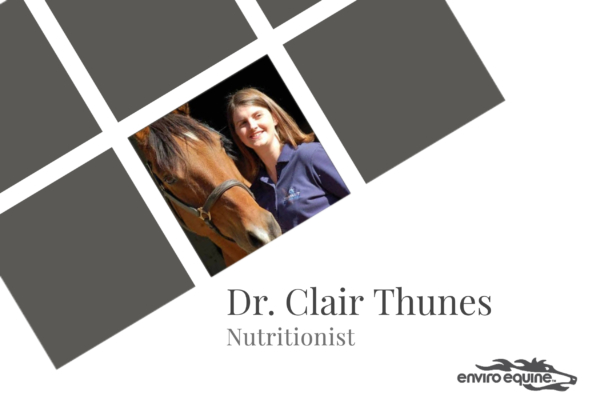
Dr. Clair Thunes is a Nutritionist and scientist at EnviroEquine, a leading manufacturer of pet and stable products, with a focus on sustainability, transparency, quality, and integrity. She is a frequent guest speaker at the UC Davis School of Veterinary Medicine, and currently teaches Equine Health at Cosumnes River College. Dr. Thunes understands the vital role that nutrition plays in managing horses, and believes in making nutrition accessible to everyone. By removing the guesswork, owners have peace of mind knowing that their horses’ diets are optimized for maximum health and peak performance.
This week, she explains a bit about the natural equine diet, and answers all the questions we couldn’t.
What exactly does all-natural mean as it pertains to horses, and is it safe?
As a term, all-natural does not mean anything specific, as the term is not recognized or regulated by the USDA. When we think about this term in relation to feeding horses, most would probably agree that it means feeding them a diet as close as possible to the type of diet that they evolved to eat, which means a forage-first diet.
Some commercial feed brands are making an effort toward more natural ingredients, or less processed techniques. What do you currently see being done, and is it a good start?
For a number of years now, the major feed manufacturers have been reducing the starch and NSC content of their feeds, relying more heavily on sources of fermentable fiber and fats as energy sources. While the natural diet of the horse is not particularly high in fat, they do digest fat well and it is a safer way to feed them extra calories when needed than relying on starch. More recently, some manufacturers have started to offer feeds with non-GMO ingredients.
Does a more natural diet mean a DIY preparation of meals, or a combination of commercial options with supplements?
A more natural diet means starting with good, clean forage and relying on this as the foundation of your nutrition program. From there it is a matter of adding what is missing from that diet, depending on each individual horse’s needs. This might mean the addition of a higher calorie feed if the horse is struggling to maintain condition on a purely forage diet, or it might mean just adding a source of vitamins and minerals that are commonly missing in the forage. Some owners will prefer to achieve this in a more DIY fashion, and until recently, if you wanted to follow the more natural approach, that was really your main option. However, with major feed manufacturers starting to embrace more natural approaches such as non-GMO and the availability of USDA certified organic feeds, there are now more options for those who want a little more convenience.
When reading labels, what are some of the “least attractive” ingredients of which we should be mindful in commercial feeds today?
Some of the ingredients that are perceived as unattractive are in fact misunderstood. Those who subscribe to feeding “all-natural” tend to be anti-by-products, as these ingredients are the result of processing a commodity for some other purpose. For example, beet pulp is a by-product of the sugar beet industry. While it is a by-product, it has a very useful purpose as a fermentable fiber in feed, providing calories in a form that requires microbial fermentation in the horse’s hindgut, a process that honors the horse’s digestive anatomy and physiology. Including beet pulp in feed allows feeds to reduce starch, creating a diet that relies more heavily on fiber, which is a good thing.
Another example is wheat middlings. Often considered to be the sweepings off the mill floor, they are in fact the by-product from the milling of wheat for flour. As the demand for lower starch feeds has increased, feed manufacturers have had to turn to ingredients that have lower starch but that still maintain the overall calorie intake of the feed. This is where wheat middlings come in, because they have a starch content in the low 20 percent range, whereas straight grains have starch values of over 40 percent. So while processing of ingredients is often frowned upon by those who want to feed all-natural diets, processing can be a very good thing.
EnviroEquine’s Performance PLUS certified organic feed for horses. Find all the facts about this feed here.
What are the more natural ingredients/alternatives we should consider instead?
For those who are concerned about using natural ingredients for their horses, rather than avoiding certain processing techniques or by-product ingredients that can bring a lot of value to the ration, look for those ingredients from non-GMO or certified organic sources.
Can you give us examples of more natural ingredients we could be looking for that address the basics like protein, fat, carbs (NSC and fiber)?
When forage is the majority of the horse’s diet it will provide adequate fiber and also most of the horse’s protein and carbohydrate needs. However, protein quality may not be optimal and additional sources may be needed. Ingredients such as field peas, canola meal, flax and alfalfa can provide additional sources of amino acids. Carbohydrates in the form of starch are most easily provided by feeding whole oats, although this would not be appropriate for horses with metabolic issues. Flax, sunflower seeds, copra meal (coconut meal), as well as oils such as camelina, are all sources of additional fat.
Then there are all of the vitamins and minerals…how do we ensure we aren’t robbing our horses of the essentials?
It is important to make sure that the diets we are feeding are properly fortified at a level to meet the horse’s daily requirements. This is especially true for the trace minerals zinc and copper, which are often deficient in forage based diets. Vitamin E levels should be tested through blood work to determine whether additional supplementation is required, as this is another nutrient that is often lacking, especially when the diet relies heavily on hay.
And, naturally, how does one transition off of commercial feed to a more natural regimen?
There is no special way to transition to a more natural diet. As with any diet change, it should be done slowly over a period of at least 7 to 10 days. This will allow the digestive tract time to adapt to new feed ingredients, and helps to reduce the risk of colic.
EnviroEquine offers free nutrition consultations for anyone who is curious about which EnviroEquine products might be ideal for their own horses. We asked Dr. Thunes to evaluate a few equines from the OR community, and she was kind enough to share her thoughts.

Organic Balancer PLUS would be an excellent choice for this horse as it will ensure that the diet is meeting all mineral and vitamin needs, as well as providing a small amount of additional calories without making the horse more hot. Daily Amino should be added as a source of essential amino acids, and Omega Balance for omega-3 fatty acid support. As this horse is spooky, Cool may help with mental focus and rideability.
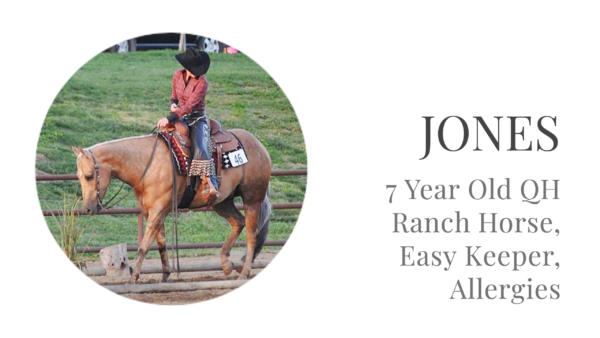
Being an easy keeper that does not need additional calories from grain makes this horse another candidate for Everyday Balance, which will provide all needed minerals and vitamins without additional calories. The flax in this product should help support the horse’s allergies. However, additional omega-3 fatty acids could be provided by also feeding OmegaBalance.
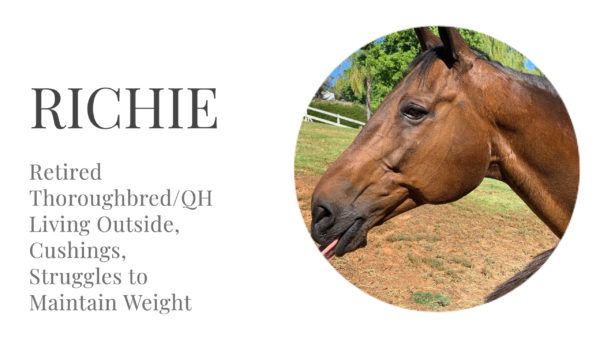
Horses with cushings should be fed diets low in non-structural carbohydrates, as they may also have or develop insulin dysregulation. However, they need to receive adequate minerals and vitamins to meet their needs. They may also struggle to maintain lean muscle mass, so a source of quality protein or essential amino acids is also a good idea. Everyday Balance provides the required daily minerals as well as digestive tract support, which can help these horses to fully utilize their diets. The flax base of this product provides omega-3 fatty acids which may help support healthy glucose metabolism. Builder provides a source of complete protein with all essential amino acids, or Daily Amino could be used, which supplies the three most commonly missing essential amino acids.
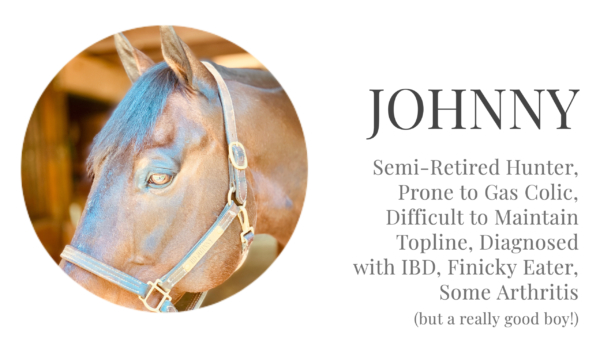
The Organic Balancer Plus would again be useful here, and this time, to support topline development, Builder is recommended. The hemp based product provides a source of complete protein, including all essential amino acids needed for muscle development. To support the IBD and hindgut function, GastroBalance PLUS should be added. This supplement provides a combination of live yeast, prebiotics and bentonite clay to help stabilize the hindgut environment and support beneficial hindgut bacteria. OmegaBalance should be added for omega-3 fatty acids, as this may help maintain a healthy inflammatory response not only in the lining of the digestive tract, but throughout the horse’s body.
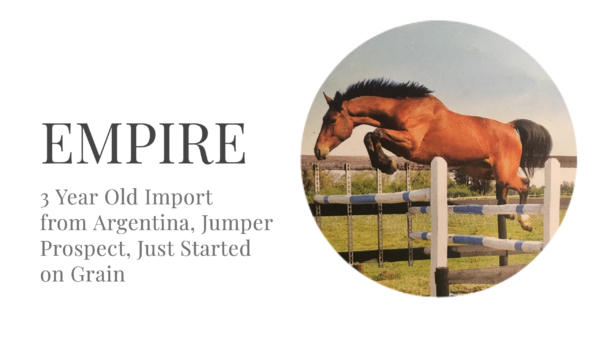
It sounds as though this mare is in need of additional calories to support condition, and Organic Performance Plus would be a good choice as it has a relatively small daily serving for a performance feed of only 4 pounds per day for an average sized (1200 lb) horse. When fed correctly, this feed will provide all needed minerals and daily vitamins. Daily amino would provide an additional source of essential amino acids to help promote muscle development, and OmegaBalance should be added for omega-3 fatty acids.
All of these horses should have their vitamin E checked, and depending on the results, may require additional vitamin E supplementation in the form of Emcelle Tocopherol, which is a highly bioavailable water soluble form of vitamin E proven to raise blood levels in a matter of hours. Additionally, Electrobalance is recommended for all horses as it is important to ensure adequate sodium intake to stimulate thirst, as well as other key electrolytes to replace sweat losses.



